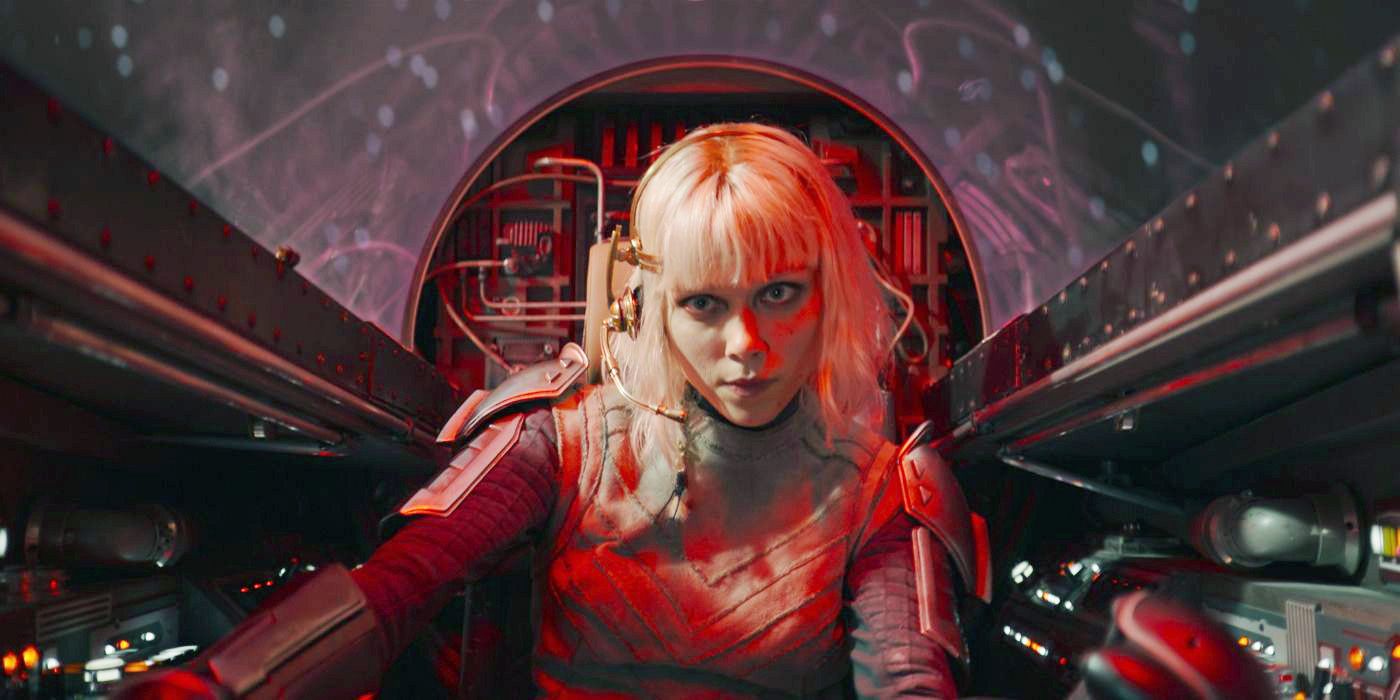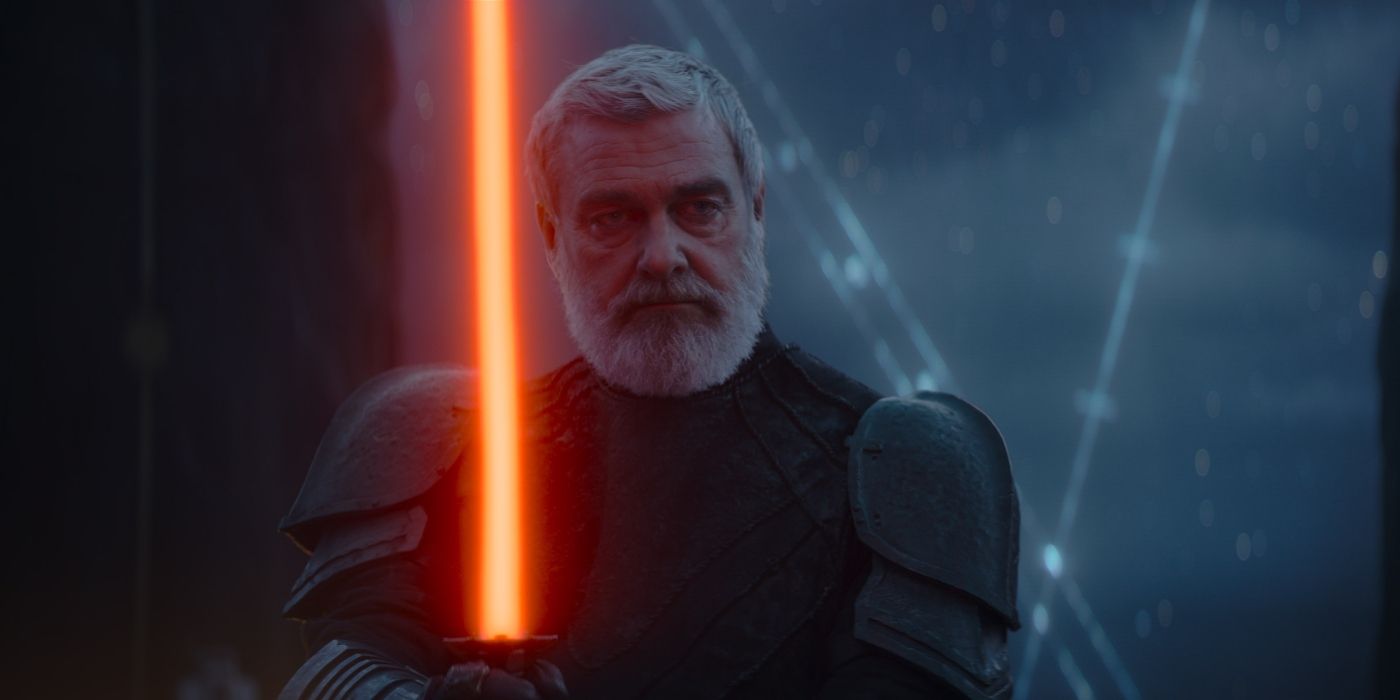Editor’s Note: The following contains spoilers for Ahsoka Episode 4.
The Big Picture
- Ahsoka fails to fully explore the intriguing master-apprentice relationship between Baylan Skoll and Shin Hati, missing an opportunity to bring something new to the Star Wars universe.
- The lack of development for Baylan and Shin reflects a larger problem in the series, with a focus on plot conveniences rather than rich characterization.
- The performances of Ray Stevenson and Ivanna Sakhno as Baylan and Shin give glimpses into their characters’ dynamics, leaving audiences wanting more answers and backstories.
Master and apprentice, order and chaos, failure and corruption: these thematic notions have defined Star Wars since Luke Skywalker (Mark Hamill) accepted the guidance of Obi-Wan Kenobi (Sir Alec Guinness) on a desert planet in 1977. Episode 4 of Ahsoka series, “Fallen Jedi,” swings for the fences attempting to address similar concepts through a less optimistic lens. Did Anakin Skywalker (Hayden Christensen) taint Ahsoka Tano’s (Rosario Dawson) perspective too much? Has Ahsoka imparted those flawed lessons onto Sabine Wren (Natasha Liu Bordizzo), her on-again off-again Jedi protege? Most importantly: why do Dark Side users Baylan Skoll (Ray Stevenson) and Shin Hati (Ivanna Sakhno) exhibit the healthiest master-apprentice relationship of the present bunch, and why in Vader’s name isn’t creator Dave Filoni developing that more? Baylan and Shin are a first in Star Wars‘ expansive pantheon: an “evil” mentorship with all the trappings of success.
They’re also the only Sith-adjacent master and apprentice without ties to the Emperor (Ian McDiarmid). Theirs is a fresh, fascinating element to explore if properly applied, as well as a fragmented reflection of the Anakin-Ahsoka and Ahsoka-Sabine dynamics. Sadly, all Baylan and Shin have demonstrated thus far are flashes of potential, blink-and-you’ll-miss-it hints of motivation. “Fallen Jedi” trails more breadcrumbs about these mysterious Dark Siders, but that says little when the only thing fans have subsisted off are crumbs. At Ahsoka‘s halfway point, such underwhelming writing fails to satisfy — and, frankly, the oversight is darned perplexing.
Baylan Skoll and Shin Hati Bring Something New to ‘Star Wars’
When Emperor Palpatine ruled the Sith, he enforced the “Rule of Two,” a decree set down by the ancient Sith Lord Darth Bane. To keep themselves hidden from the Jedi, Bane decided no more than two Sith could operate at one time. Much like the Jedi they despise, there would always be an experienced teacher and a gifted learner. The apprentice was then destined to kill his master, ensuring the Sith would always grow stronger.
Since Palpatine was all about gathering as much power as possible, he kept the Rule of Two intact with no intention of letting his apprentices replace him. The obvious subtext here is that Palpatine never viewed his proteges — Darth Maul (Ray Park), Count Dooku (Christopher Lee), and Anakin — as anything more than tools for the furthering of his selfish agenda. Every interaction with Maul was distant, manipulative, and technically abusive (I am once again asking you to read the Darth Maul backstory comic by Cullen Bunn). With the Emperor, there was no nurturing guidance or interpersonal relationship reflective of the Jedi Order’s teachings — just absolute control of three malleable pawns.
Enter the Ahsoka premiere. Baylan Skoll and Shin Hati descend upon that New Republic vessel with enough concentrated savagery to leave none standing. Filoni’s direction frames their attack as a callback to the opening of Star Wars: Episode IV — A New Hope, but what sets Ahsoka apart is the presence of two Dark Siders (as of yet never called “Sith”). Baylan and Shin work in coordinated tandem as smoothly as the Obi-Wan and Anakin of the prequels. These two are experienced, and they operate on the same wavelength; a tangible understanding flows in the empty spaces between them.
After Episode 1’s ominous beginning, almost every insight into these new characters comes from Ray Stevenson and Ivanna Sakhno. Both deliver mesmerizing performances, Sakhno a golden talent simmering with lethal intent and Stevenson shining as the veteran of pathos he was. The actors are superbly aware of one another, tracking minute gestures and intuiting moods without words. Since “Fallen Jedi” maintains Filoni’s track record of keeping his cards too close to his chest (and/or failing to develop fully fledged characters in live-action), it’s once again Stevenson and Sakhno who grant a greater glimpse into their characters’ dynamic. Mainly, they reaffirm Baylan and Shin’s comfortable rapport. Baylan firmly tells Shin not to kill Sabine; after a beat of frustration, Shin obeys. Ahsoka flings Shin’s body against a rock; Baylan’s mad as hell and advances upon Ahsoka with renewed vigor. One can’t describe their apprenticeship as brimming with warmth, but it feels tempered with respectful professionalism rather than malice — similar to the emotional distance the Jedi loved to promote.
‘Ahsoka’ Hasn’t Explored Baylan and Shin Enough
Sakhno’s especially attuned to Stevenson as Shin looks to Baylan for guidance, absorbs new information, and contemplates wildly behind those frozen river eyes. She’s quietly pleased when she performs to expectations, and her questions don’t suggest mistrust. And Baylan trained her for battle like nobody’s business. Sakhno’s performance screams for answers to a dozen questions: Where did Shin come from? How did she meet Baylan? What’s her motivation for being on this path? Is her character only here to snarl at Sabine as they clash lightsabers? With all due respect, Mr. Filoni, I’m knocking on your door until you answer my questions.
Similar intrigue follows Baylan, whom the beloved Stevenson infuses with an indomitable presence that practically steals the show (and steals my breath with mournful admiration). Why is Baylan mentoring this young woman? What’s his history with the Jedi beyond being a surviving member who conveniently knows that Anakin became Vader? The little dialogue Filoni deals out suggests Baylan is neither Jedi nor Sith but an indefinable in-between. He respects the Order enough to incorporate their ideas into Shin’s training but finds their philosophies flawed and their fallen members foolish. He’s not a corrupted Inquisitor who deals in gleeful death; he dislikes destruction but believes such measures are necessary. And Baylan’s intuitive enough to play Sabine’s emotions like a fiddle but keeps his promise of taking her along for what will inevitably be Galaxy’s Edge’s brand-new ride, “The Hunt for Thrawn.” So what turned Baylan onto this roguish path? What does he hope to gain from Thrawn (Lars Mikkelsen) beyond nebulous “power”? Why is a promising character left to brood in close-up?
At Ahsoka‘s mid-point, these desired answers remain nonexistent. Baylan and Shin have shared more screen time than Palpatine did with his devotees, but 98% of said time has been caught up in Dave Filoni manipulating plot mechanics. Star Wars has never depicted a Dark Side master and apprentice relationship sans Palpatine or one that challenges the assumption all Sith-esque relationships must be poisonous. Baylan and Shin’s harmony presents a golden opportunity to do something new, even to disrupt the established ideas behind Force training — and Ahsoka‘s delivered too little. Is their relationship truly a nurturing, healthy one, or are we reading between the lines of the actors’ performances?
Baylan and Shin’s Poor Development Is Part of a Larger Problem
Wasting Baylan and Shin by not developing their characters beyond, “It’s me, hi, I’m the interesting but ambiguous villain” plays into the main problem plaguing Ahsoka so far — skimming over characterization and necessary explanation in hot pursuit of a MacGuffin. The metaphor that Dave Filoni and Jon Favreau‘s era of Star Wars feels like they’re moving action figures around on the playground hasn’t faded with Ahsoka. The live-action series are lightly dusted with fabulous ideas that don’t have time to breathe. Plot conveniences and contrivances rule while characterization takes a back seat. Filoni’s always had a gift for creating original characters; Ahsoka, by contrast, feels so determined to get to Thrawn — and presumably Ezra Bridger — that it’s left Baylan and Shin, the best new contributions, as sketches. Aside from some standout moments, even the returning Rebels characters aren’t richly worked. Compared to their progenitor series, they’re finger paintings.
With four episodes of Ahsoka left, new revelations about Baylan, Shin, and their relationship might emerge. On the other hand, with the return of Thrawn extremely eminent, there’s the risk his presence will overshadow the other antagonists. The glimpses of Baylan as a man predispositioned toward mentorship but one ruthlessly pursuing his goals; the wonder at what drives Shin’s tempered rage…I needed to know everything about them yesterday. If Baylan Skoll and Shin Hati go down in Star Wars history as characters with neglected potential, it will be to this too-repetitive franchise’s detriment.






